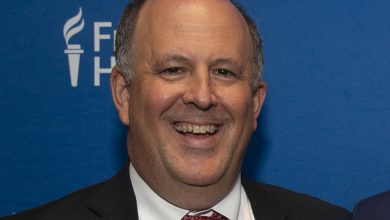The Gems Hiding in Plain Sight in the Treasury Market

You didn’t have to be a financial wizard to get a safe return of more than 7 percent on your money for decades to come. All you had to do was buy a 30-year U.S. Treasury bond in the last nine months of 1994.
And if you were especially lucky with your timing and bought that bond in early November 1994, you could have gotten more than 8 percent interest annually.
There were treasures elsewhere in the investment-grade bond market. Tax-free municipal bonds were paying more than 6 percent, and corporate bonds carried rates that were even higher.
Those kinds of gems aren’t available now. While interest rates have risen appreciably, I’m not confident that we are experiencing a 30-year peak with bargains galore, as the fortunate bond buyers of 1994 did.
But I do see parallels. After months of horrendous losses, long-term buy-and-hold bond investors can expect relief from disappointing returns in the years ahead.
What’s more, with short-term Treasury rates well above 5 percent, 10-year Treasury bonds sporting yields in the 4.9 percent range and investment-grade corporate bonds above 6 percent, fixed-income investments are attractive — certainly in comparison with the ultralow rates of a few years ago.
This isn’t entirely good news. Rising rates hurt borrowers, increasing the cost of mortgages, credit cards, car loans and more. Much as in 1994, the rise in bond yields is associated with a tightening Federal Reserve interest rate cycle, and with concerns about the future of inflation.
Bond losses, then and now, are a consequence of rising market yields: Prices and yields move in opposite directions, as a matter of fundamental bond math. It is precisely because yields have risen to the highest levels in more than 15 years that this is again a good time to own and buy investment-quality bonds.
Last week’s column covered some of this. Along with plenty of caveats, here are further ideas for bond investing.
Some Basics
I’m a buy-and-hold investor, relying mainly on cheap index funds that track the entire stock and bond markets — an approach that assumes you can afford to ride out market fluctuations for many years.
But this won’t work for everybody. Many people don’t have horizons of a decade or longer. They may be retirees who can’t tolerate market declines. Or they may be putting away money for a purpose with a defined time span, like a child’s education or the down payment for a home or vehicle.
For these and many other situations, bonds may be appropriate — either through funds or individual securities.
The main bond fund I invest in through my 401(k) tracks the U.S. investment-grade bond universe, as defined by the Bloomberg U.S. Aggregate Bond Index. This kind of fund is common in workplace retirement plans. It has been roughly flat for the last five years but has taken losses of more than 5 percent, annualized, over the last three years. Even so, I’m holding on to it.
It entails risk. It could incur additional losses if interest rates rise a lot more. That’s acceptable to me because I’m in it for the long haul. But you may not want to endure market declines.
So consider safer alternatives.
Reducing Risks
At current rates, money-market funds are a good option. Yields on the 100 biggest money-market funds tracked by Crane Data average 5.17 percent, up from nearly zero in 2020 and just 0.6 percent in June 2022.
Fees matter, especially for fixed-income investments, where returns are usually in single digits. Vanguard’s fees are low, and one of its money-market funds yields 5.3 percent.
Money-market funds aren’t insured by the government, but they hold government securities, especially Treasuries. Finance textbooks describe Treasuries as risk-free assets, though I can’t make that claim with a straight face. The U.S. government’s credit ratings are no longer pristine. Already this year, the government has come close to a shutdown or, even worse, a breach of its debt ceiling.
Similarly, if you shop around, bank certificates of deposit and high-yield savings accounts can be good choices, with guarantees that are as safe as the credit of the U.S. government.
Treasury Securities
Another approach is buying Treasuries that you hold until they mature. This past week, two-year Treasuries reached their highest yield since 2006: 5.2 percent. The yield could rise further — it could also fall, no predictions here — but this is already an attractive payout.
Trading Treasuries can be hazardous: You can incur losses if interest rates rise. So if you are risk-averse, stick with short-term Treasuries or with low-cost, diversified short-term bond funds, which generally hold securities of one- to three-year durations.
You can make Treasury purchases through a broker — watch out for fees — or without a middleman on Treasury Direct. The site isn’t slick, but it charges no fees. There, you can obtain savings bonds, both the classic EE bonds and the inflation-adjusted I bonds, as well as an array of inflation-adjusted and nominal Treasuries.
Read the fine print, though. I found EE savings bonds intriguing. While they offer an interest rate of just 2.5 percent, compared with 4.3 percent for I bonds, there is a sweetener. Hold on to EE bonds for 20 years and the government guarantees you will double your money. This amounts to an effective, unadvertised interest rate of about 3.6 percent, but only if you keep the bonds that long. While I bond yields are now higher, they reset every six months.
Then there are standard Treasury securities, ranging from one-month bills to 30-year bonds, offering higher yields than investors have received in years.
Lessons From 1994
It may be tempting to buy a 20-year Treasury with a yield of more than 5.2 percent, with the intention of holding it to maturity.
Whether that’s a brilliant purchase, or one you might regret in a few years because interest rates have moved much higher, is a question I can’t answer.
But if it’s of any solace, people in 1994 didn’t know where interest rates were heading, either. Most articles about bonds then were overwhelmingly negative. “A Painful Year of Higher Rates” was the headline of a representative New York Times article.
In 1995, the Fed engineered a rare “soft landing” for the economy, quelling inflation without setting off a recession, and cutting interest rates. A soft landing is the Fed’s goal this time around, too. But, of course, we don’t know if it will get there.
What’s inescapably true, however, is that for investors, interest rates are much more appealing than they were a few years ago. There might be better opportunities ahead, but this is already a good time to buy.




